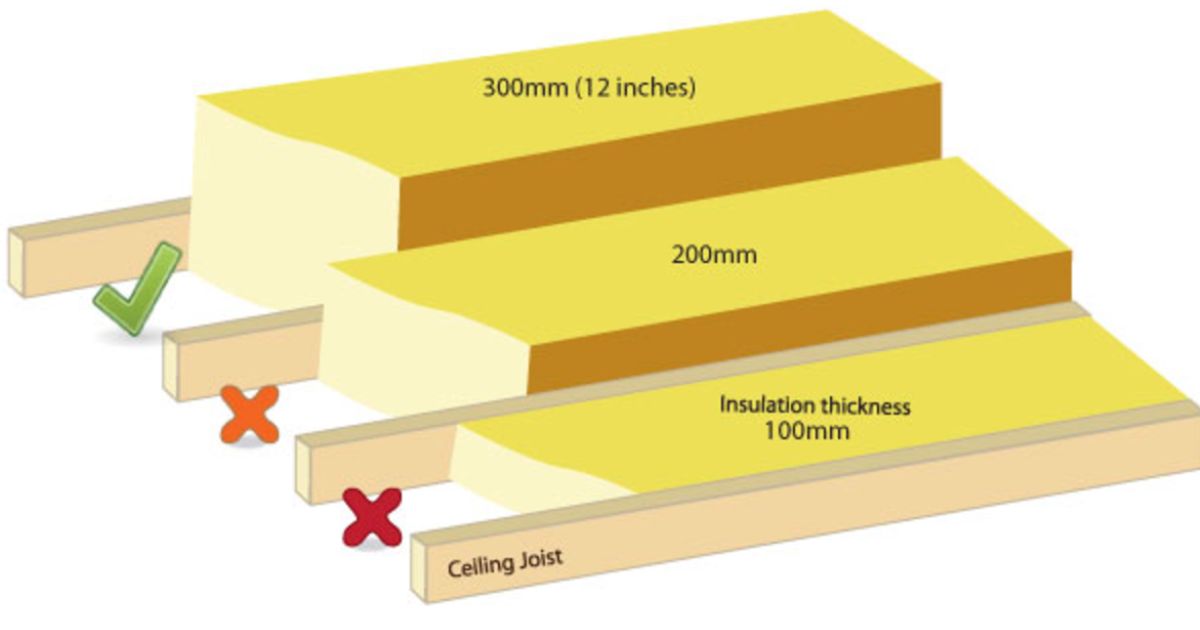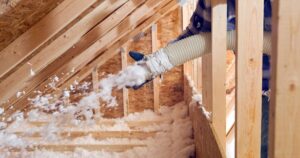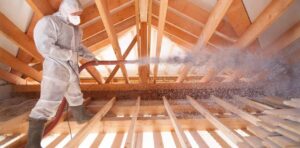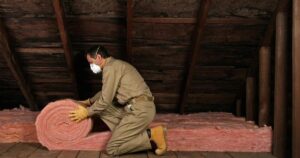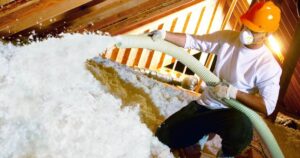When it comes to insulating your home, there’s more to it than just adding a layer of insulation. The thickness of the insulation plays a crucial role in determining its effectiveness. Blown insulation is a popular choice for homeowners looking to improve their home’s energy efficiency and comfort.
In this comprehensive guide, we will explore the factors that influence the ideal thickness of blown insulation for your specific needs.
Blown insulation, also known as loose-fill insulation, is a popular and effective method for insulating homes and buildings. It’s used to create a thermal barrier that helps regulate indoor temperatures, increase energy efficiency, and reduce heating and cooling costs.
Why Blown Insulation?
Before we dive into the optimal thickness, let’s understand why blown insulation is a favored choice. Blown insulation, also known as loose-fill insulation, consists of small particles that are blown into the cavities or spaces within your walls, attic, or floors. This type of insulation offers several benefits, including:
- Enhanced energy efficiency
- Improved thermal performance
- Reduced energy bills
- Soundproofing properties
- Easy installation in hard-to-reach areas
Factors Influencing Blown Insulation Thickness
The ideal thickness of blown insulation depends on several factors, and one size certainly does not fit all. Here are the key considerations that will help you determine the right thickness for your home:
Climate Zone
The first factor to consider is the climate zone in which your home is located. Colder climates require thicker insulation to effectively trap heat, while milder climates may require less insulation. It’s important to adhere to the local building codes and recommendations for your specific region.
Desired R-Value
The R-value is a measure of the insulation’s thermal resistance. The higher the R-value, the better the insulation’s performance. Your desired R-value depends on your specific goals, such as reducing energy bills or enhancing comfort. A professional assessment can help you determine the right R-value for your home.
Material Type
Blown insulation comes in various materials, including spray form, cellulose, and mineral wool. Each material has different insulating properties and may require varying thicknesses to achieve the desired R-value. Your choice of material should align with your insulation goals and budget.
Existing Insulation
If your home already has insulation, you need to consider whether you’re adding blown insulation as a supplement or replacing the existing insulation. Combining insulation types can be effective, but it requires careful planning to ensure the right thickness and uniform coverage.
Location of Installation
Blown insulation can be installed in different areas of your home, including the attic, walls, and floors. The thickness requirement may vary depending on the location. For instance, attics often require thicker insulation due to their exposure to extreme temperature fluctuations.
Budget Constraints
Your budget is a practical consideration that can influence the thickness of blown insulation. While thicker insulation generally provides better performance, it’s essential to strike a balance between your budget and your insulation goals.
How to Determine the Right Thickness
To determine the ideal thickness of blown insulation for your home, follow these steps:
Consult a Professional
Engage a professional insulation contractor to conduct an energy audit of your home. They can assess your home’s specific needs, climate conditions, and existing insulation.
Consider Your Goals
Discuss your insulation goals with the professional. Are you primarily concerned with reducing energy consumption, enhancing comfort, or soundproofing? Your goals will guide the decision on insulation thickness.
Evaluate Material Options
Together with the contractor, explore the different material options available. Each material has its advantages and thickness requirements.
Follow Local Codes
Ensure that the chosen thickness aligns with local building codes and regulations. Compliance is essential for both safety and energy efficiency.
Budget Considerations
Discuss your budget constraints with the contractor. They can help you find cost-effective solutions that meet your insulation needs.
FAQ’s
How do I choose blown-in insulation?
Fiberglass, cotton, and mineral wool can all work as loose-fill insulation material, but the far and away top choice for blown-in insulation is fiberglass.
How thick should insulation be in walls?
Typically, there is not an abundance of space inside your walls, so packing in the insulation isn’t a bad idea. To get an R-value of 13 to 16, you will need four to five inches of insulation.
4. Conclusion
The ideal thickness of blown insulation for your home is not a one-size-fits-all answer. It depends on various factors, including your climate zone, desired R-value, material type, existing insulation, location of installation, and budget.
To determine the perfect thickness, consult a professional insulation contractor who can tailor a solution to your specific needs. By doing so, you can enhance your home’s energy efficiency, comfort, and overall livability while making a well-informed investment in your property.

